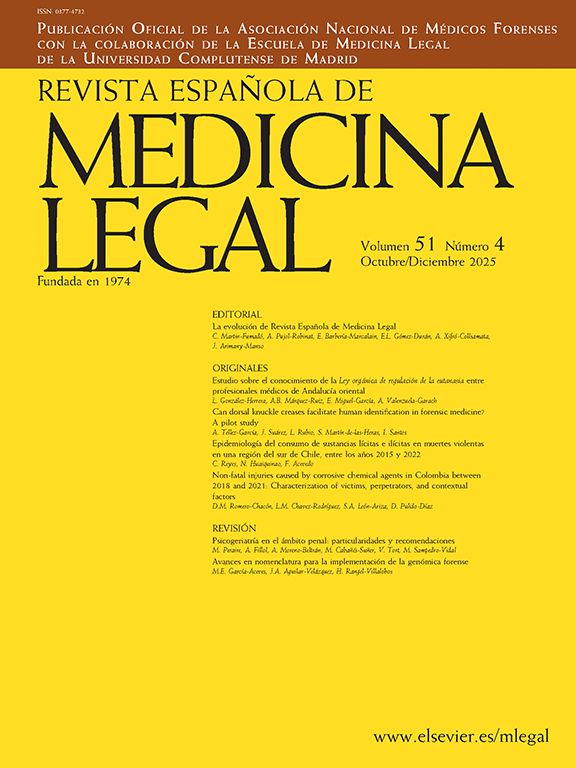se plantea el estudio del grado de concordancia interobservador en la interpretación de las pruebas radiológicas utilizadas para la estimación médico-forense de la edad en menores migrantes sin referentes familiares, tanto entre el radiólogo y el médico forense, como entre los 2 médicos forenses que valoran cada caso.
Material y métodose trata de un estudio prospectivo de los 69 casos estudiados en el Instituto de Medicina Legal y Ciencias Forenses de Alicante entre 2023 y 2024. Cada observador valoró y adjudicó un estadio, siguiendo el atlas de Greulich y Pyle en las radiografías de mano y muñeca, los estadios de Demirjian en las ortopantomografías y las clasificaciones de Schmeling y Kellinghaus en las tomografías computarizadas de la extremidad proximal de la clavícula.
Se utilizó el paquete estadístico IBM SPSS Statistics 28.0, obteniéndose tanto el porcentaje de acuerdo observado como el índice Kappa, que corrige el acuerdo por azar.
Resultadosel grado de concordancia entre los 2 médicos forenses fue muy bueno para la radiografía de mano y muñeca (k = 0,931), muy bueno para la ortopantomografía (k = 0,828) y sustancial para la tomografía computarizada (k = 0,671); sin embargo, el grado de acuerdo entre el radiólogo vs. el médico forense fue menor en las 3 pruebas: sustancial para la radiografía de mano y muñeca (k = 0,748), moderado para la ortopantomografía (k = 0,434) y discreto para la tomografía computarizada (k = 0,285).
Conclusionesestos resultados resaltan la importancia de la formación y el entrenamiento en la valoración médico-forense de estas pruebas radiológicas.
This study aims to study the degree of interobserver agreement in the interpretation of radiological tests used for forensic age estimation in migrant minors without family references between the radiologist and the forensic doctor and between the two forensic doctors who evaluated each case.
Materials and methodsThis is a prospective study of the 69 cases studied at the Institute of Legal Medicine and Forensic Sciences of Alicante during 2023 and 2024. Each observer assessed and assigned a stage, following the Greulich and Pyle atlas for hand and wrist radiographs, the Demirjian stages for panoramic radiographs, and the Schmeling and Kellinghaus classifications for computed tomography scans of the proximal clavicle.
The IBM SPSS Statistics 28.0 statistical package was used; obtaining both the percentage of observed agreement and the Kappa index, which corrects for chance.
ResultsThe degree of agreement between the two forensic physicians was very good for the hand and wrist radiograph (k = 0.931), very good for the panoramic radiograph (k = 0.828), and substantial for the computed tomography (k = 0.671). However, the degree of agreement between the radiologist and the forensic physician was lower for all three tests: substantial for the hand and wrist radiograph (k = 0.748), moderate for the panoramic radiograph (k = 0.434), and modest for the computed tomography (k = 0.285).
ConclusionsThese results highlight the importance of training and instruction in the forensic medical evaluation of these radiological tests.











